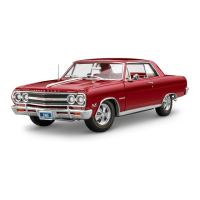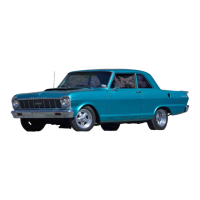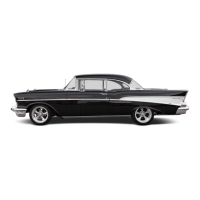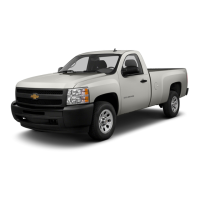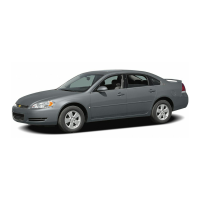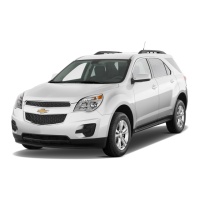l!l:
'1f'
( The
chart
on the previous
pageiand
~
informQtion,on the l¥I!Jes
which follow, contains
infGrmationdesignedto
aid"the
qY;8
'
r~ge
driver to discover,
and
possibIY
~
>99rr!'lct,
conditions resulting.fri'rjlinor
mechanical
difficulties
in
his cdif>The
chart,
desigped to
paint
out
possible solutions to several
of
the most common 'automotive mal-
functions
and
point,out a ,logical checking
sequence,
will
lead
step
>
~ystep
to the most"likely
causes
and
corrective
procedures
.
If,
after
making the. checks
and
adjustments
suggested,
the
source
of
the
trouble .
has
not Deen found
and
corrected,
it
is
strongly recom-
mended
that
anAuthorized
Qlevrolet
Dealer
inspect
the vehicle
and
make
whatever
repairs
or
adjustments
are
necessary.
'"
If
the ignition switch will
cause
the
engine
to
"turn
over"
or
"crank"
but the
car
will not start,
jij
check Steps .A through 0 below.
, ;',
!
NOTE:
If
continual "flooding" of
the
carburetor
;~
evid.
enced
by
a caf'/Suretor wet with fuel
or
black exhaust smoke, perform
the operation suggested
in
par-
agraphD
only.
(A)
The first
and
most obvious,
and
one
of
the most frequently
Checking Fuel Flow
64
..
' .
overlook&<!, items to check when you have difficulty
in
starting
your
car
is
the
amount
of
fuel ,
in
the tank.
Make
it
a
habit
to check the
FUEL
GAUGE regularly
and
most especially
at
a time when the
engine
will not
sta
rt
.-
(8)
If
the fuel
tank
is
not empty, you may check further to
see
whether the fuel
is
reaching
the
carburetor.
Disconnect the fuel line
at
the
carburetor
and
remove the center (ground the
secondary
c,oil
terminal
or
disconnect the primary wire from the coil to the dis-
tributor
at
the coil) wire fr
om
the coil tower. Place a
jar
or
cup
under
the
open
line
and
briefly
"crank"
the
engine
by means
of
the .. ,
starter
.
If
fuel spurts from the fitting, you may assume that the
FUEL
LINES
are
clear
and
the
FUEL
PUMP
is
operating
properly.
If
no fuel leaves the line, either the
fuel lines
or
fuel pump
are
at
fault.
See
your
Authorized .Chev-
rolet
Dealer
.
(C)
Before reconnecting the fue'l
line to the
carburetor,
remove the
FUEL
FILTER
from the
carburetor
inlet
and
check its condition.
If
it
appears
to
be
clean,
replace
it
and
reconnect the fuel line.
Re-
place
the filter if it
appears
to
be
plugged.
(D)
If
the fuel seems
to
be
reaching the
carburetor
properly,
the
problem may
be:
an
EMPTY
Fliel Filler
CARBURETOR
BOWL
caused
by a
"stuck
shut"
carburetor;
a
FLOODED
CARBURETOR
caused
by a
"stuck
open"
condition
and
evidenced by
gasoline
seeping
around
and
down the outside
of
the
carburetor;
or
a stuck CHOKE valve. Remove the
air
cleaner
from
the
carburetor.
Check
that
the
choke
valve moves freely
and
is
not
stuck. (Don 't mistake
Tl
orinal spring tension
for
a stuck valve.)
Tap
the side
of
the
carbure
f
or
sharply
several times with a light tool such
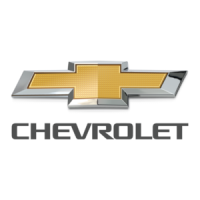
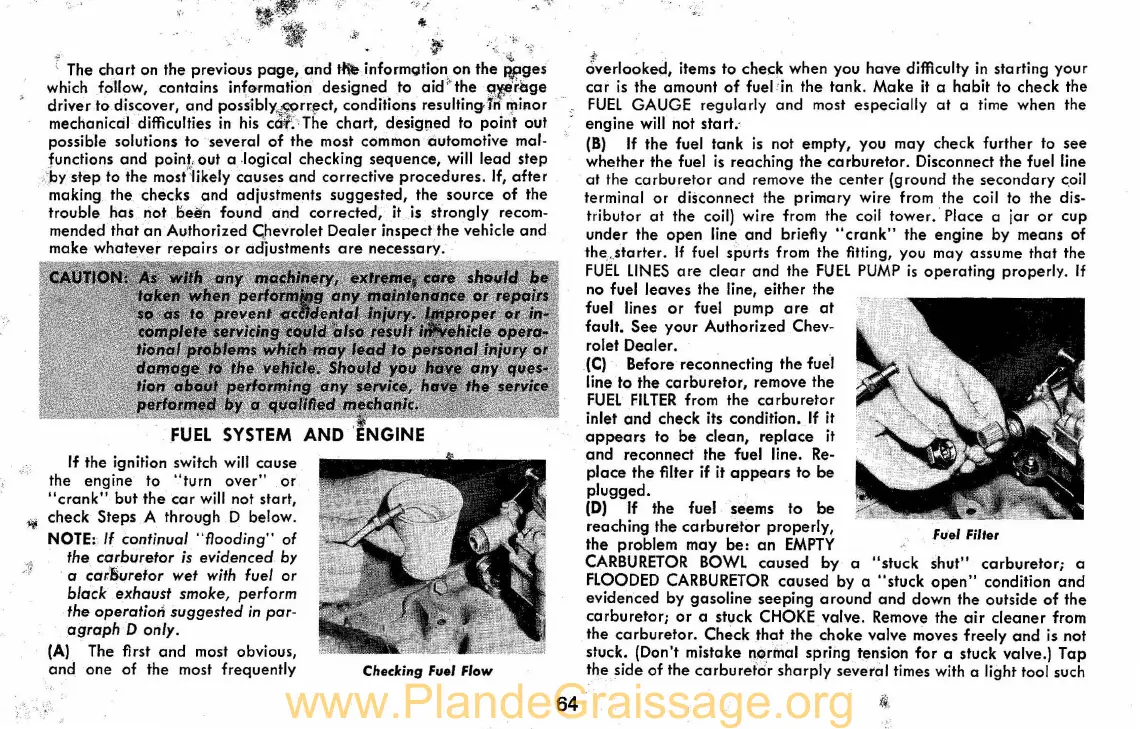